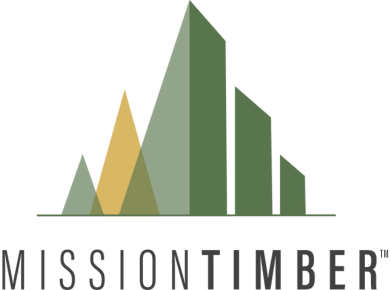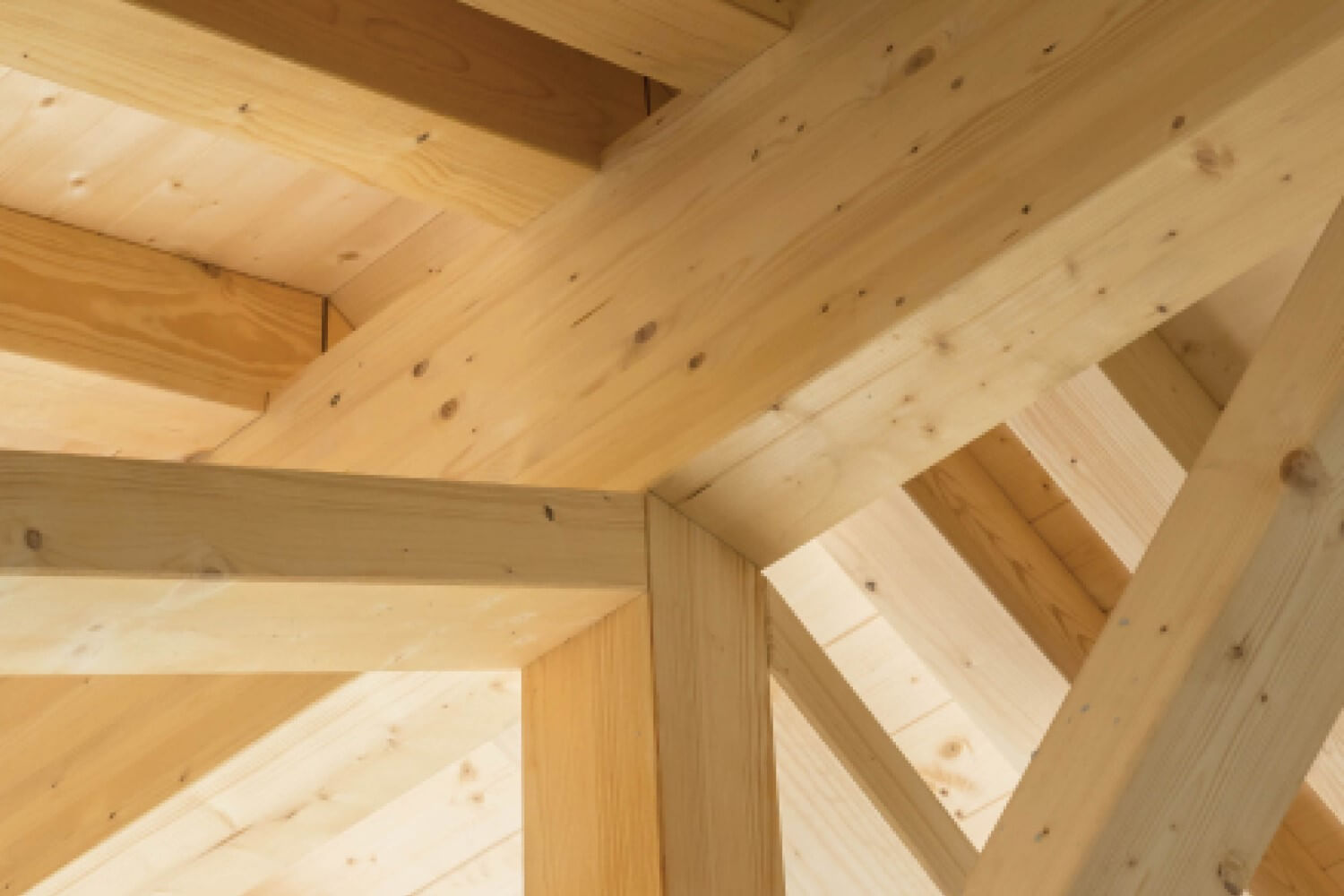Why Timber?
Developing with Mass Timber for a Better World
Mission Timber’sTM commitment to ongoing sustainability means starting with choosing the right building materials to develop better buildings, better communities, and a better future. Timber is a centuries-old, tried and trusted building material. From its beauty, strength, and versatility to its fire resistance, safety, and healthful benefits, timber has proven to perform all over the world.
Sustainability
Mass timber’s advantages are documented and recognized by green building rating systems, including certified wood, recycled materials, responsible sourcing of materials, waste minimization, indoor air quality, and biophilic lifestyle benefits. Building with mass timber is a much more efficient construction process utilizing lighter, prefabricated materials which results in 75% less workers and 90% less construction traffic.
Timber is the most natural, renewable, and sustainable building material with a lighter carbon footprint than concrete or steel. In fact, replacing concrete and steel with mass timber can reduce construction emissions by up to 69%.1 Mass Timber Framing also allows for taller wood structures, which helps cities lower their carbon footprint, and therefore improve the environment.
Maximizing wood use in both residential and commercial construction can potentially remove an estimated 21 million tons2 of C02 from the atmosphere annually – equal to taking 4.4 million cars off the road.2
Construction emissions of steel vs. Concrete vs. Timber
The charts below display the CO2 and embodied energy expended from the construction of one square meter of floor space supported by steel, concrete, or timber.3

Steel Beams

Concrete Beams

Timber Beams
C02 emissions
Embodied energy emissions
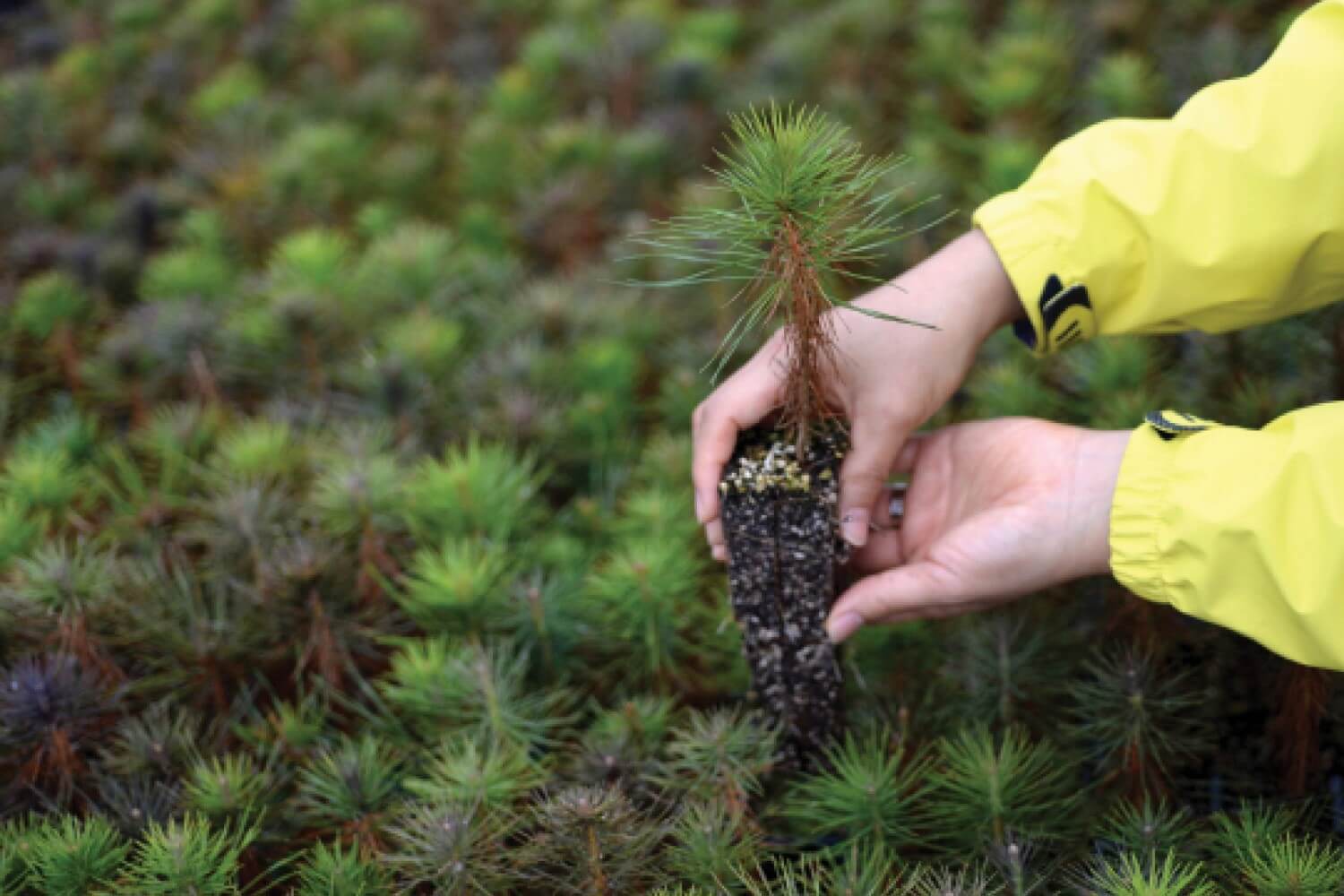
Sustainable Forestry
We source 100% of our wood materials from sustainably managed forests that maintain and enhance the long-term health of the forest ecosystem. Sustainable forestry is about caring for and managing forests to provide the natural resource of wood for now and in the future. Cross-Laminated Timber wood, a key feature in our timber construction, can also make use of smaller logs (less than 4.5 inches diameter), which would otherwise be ignored for large-scale construction.4 This timber can be sourced from areas at major fire risk, thinning flammable underbrush to create healthier and more burn-resistant forests.
Mission TimberTM promotes sustainable forest management practices, such as selective logging, which is the practice of removing certain trees while preserving the balance of the woodland, allowing young trees time to mature, the planting of trees to expand forestlands, and the creation of protected forests. For the Ascent project, lumber was sourced from Austria which stands at the cutting-edge of modern forestry, often planting in spaces once occupied by landfills and mines, in addition to using carbon-neutral heat to power many of their lumber yards.5
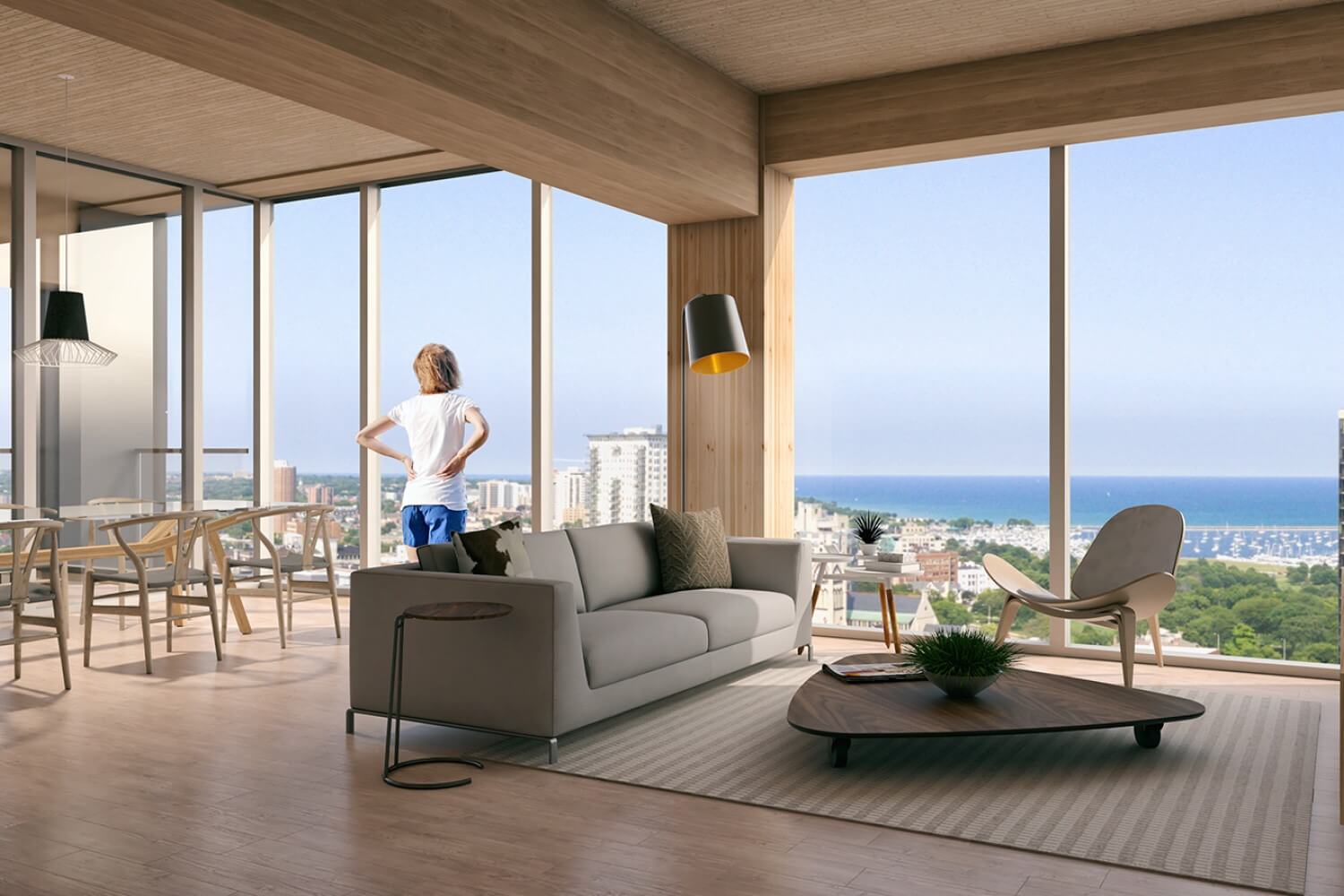
Wellness and Biophilic Benefits
Wood-built improves well-being and better living. Biophilic design is an approach to architecture that connects building occupants to nature through the use of natural and sustainable materials. Mission TimberTM is developing buildings and communities that provide more healthful work, live, and play spaces with measured biophilic properties and benefits. Beautiful, well-designed spaces are well known to have a beneficial effect on the human psyche and exposed wood interiors decrease stress levels. Biophilic designs are proven to promote productivity, increase overall well-being, reduce post-operative recovery times, and increase rates of learning and concentration.6

Carbon Sinks and forest sequestration
Forests are the most efficient natural resource for carbon sequestration, because carbon is stored within growing trees during photosynthesis and remains within the wood after the tree has been felled and used for construction. Mission TimberTM seeks out wood sources from forests considered to be carbon sinks,7 meaning they absorb more carbon from the atmosphere than they release. These sinks help to offset the steady stream of carbon dioxide into the atmosphere, which is sourced primarily from electricity production, forest fires, and fossil fuel emissions. Harvesting and regenerating forests can also result in net carbon sequestration in wood products and new forest growth.
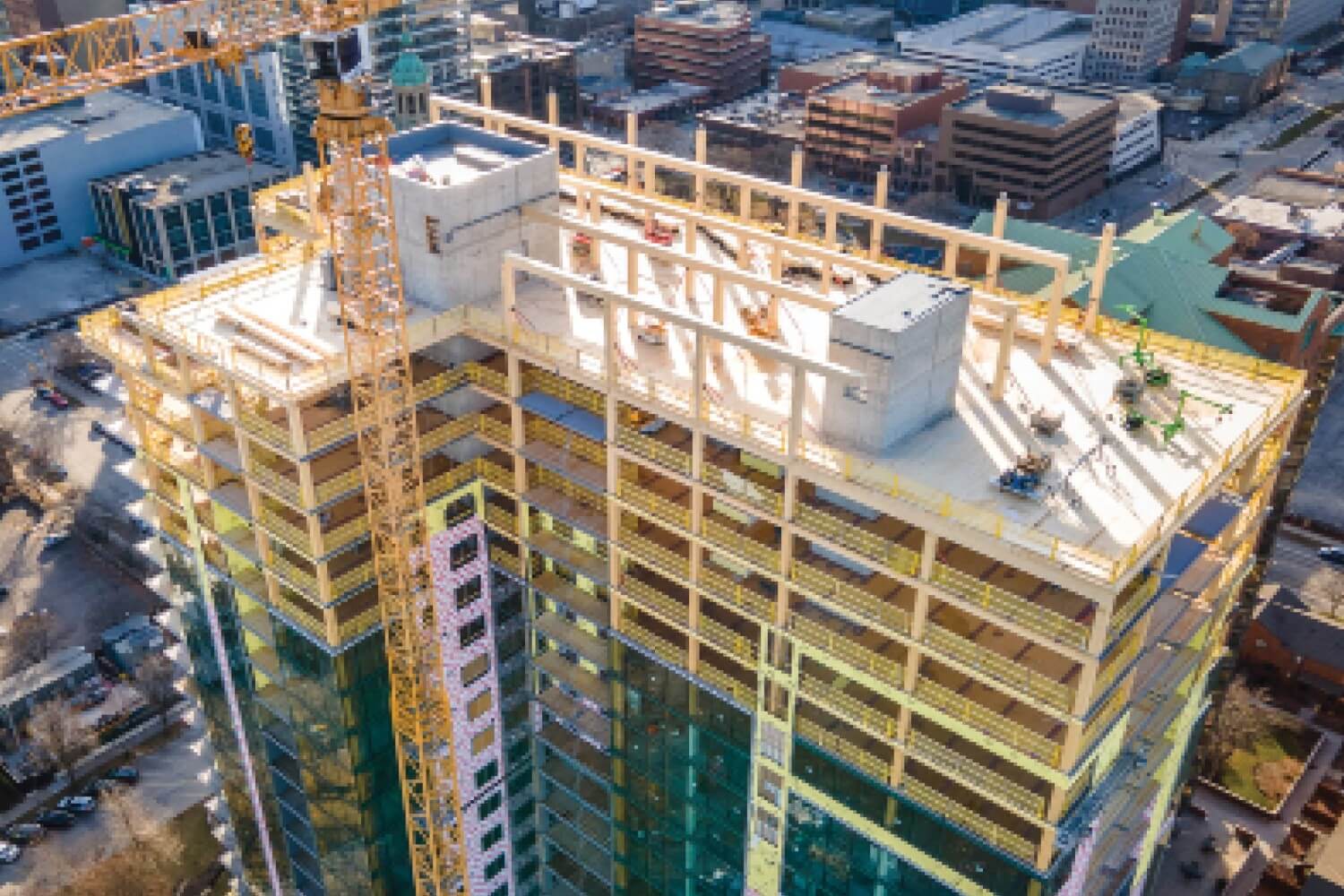
Our Approach
As stewards of our industry, we are thoughtful and purposeful about the entire mass timber development process, from concept to construction. We are committed to eco-friendly materials with sustainable and biophilic benefits.8
Mission TimberTM uses Mass Timber Framing for all wood structures. Incorporating Mass Timber Framing means all structural components, including the building beams and columns, are almost entirely wood.
Cross-Laminated Timber is our choice for floors and ceilings, which has been reported to have notable sound and thermal insulation benefits when used throughout living spaces.9 Cross-Laminated Timber is constructed in 3, 5, or 7 layers or kiln-dried boards layered, glued, pressed, and sanded. The variable sizes means we can select the most appropriate width for each construction project and space.
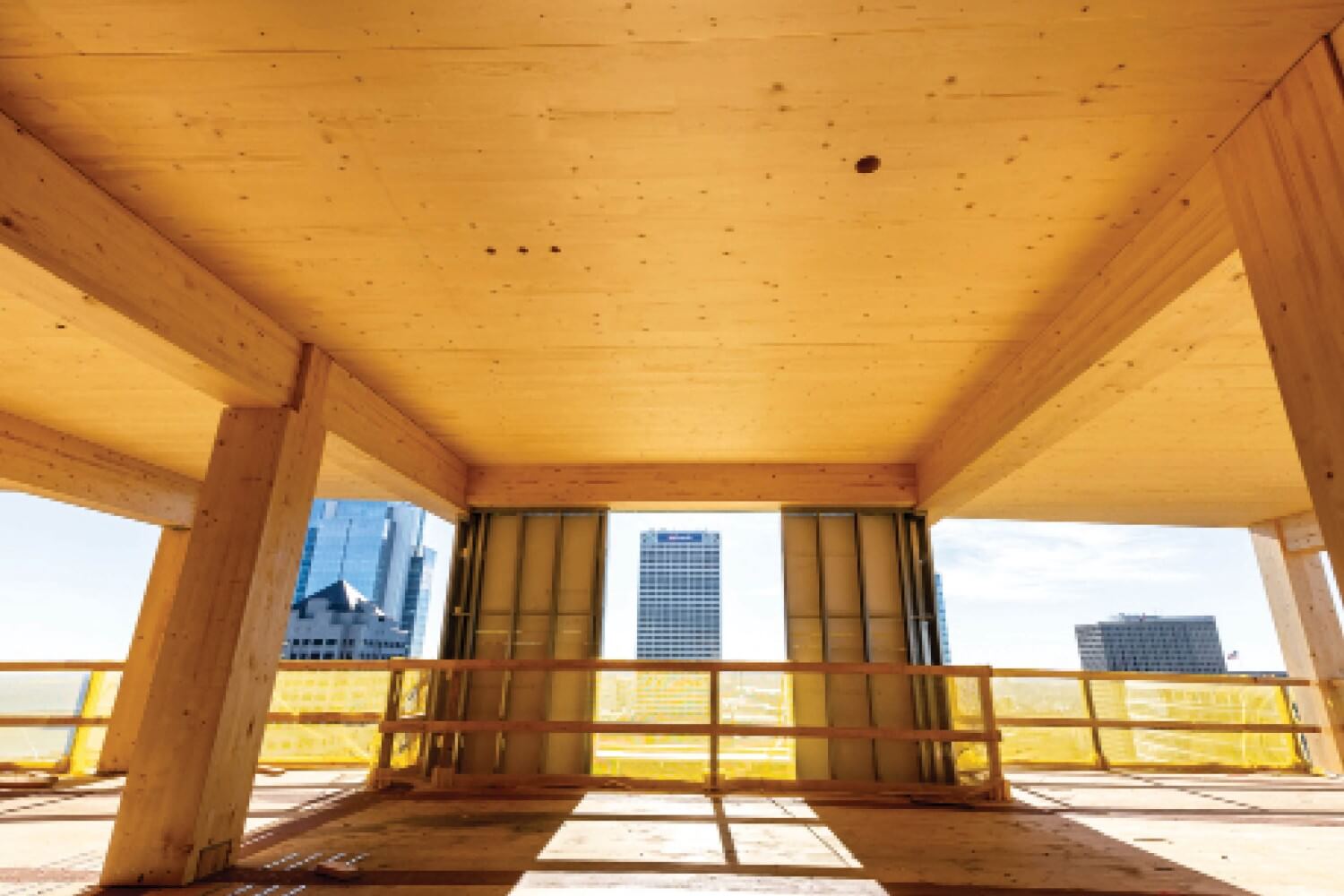
Cost Efficiency
While raw costs of timber can be high, the expertise in the industry can drive the overall project costs down through construction speed, materials, and logistics, while also delivering more revenue and
savings in soft costs. Since less piles are needed in timber construction as opposed to conventional building materials, less supervision is needed, costs are saved for equipment rental, and general overhead is reduced. In addition, because of the reduced building time, owners can begin to lease earlier, adding more revenue.
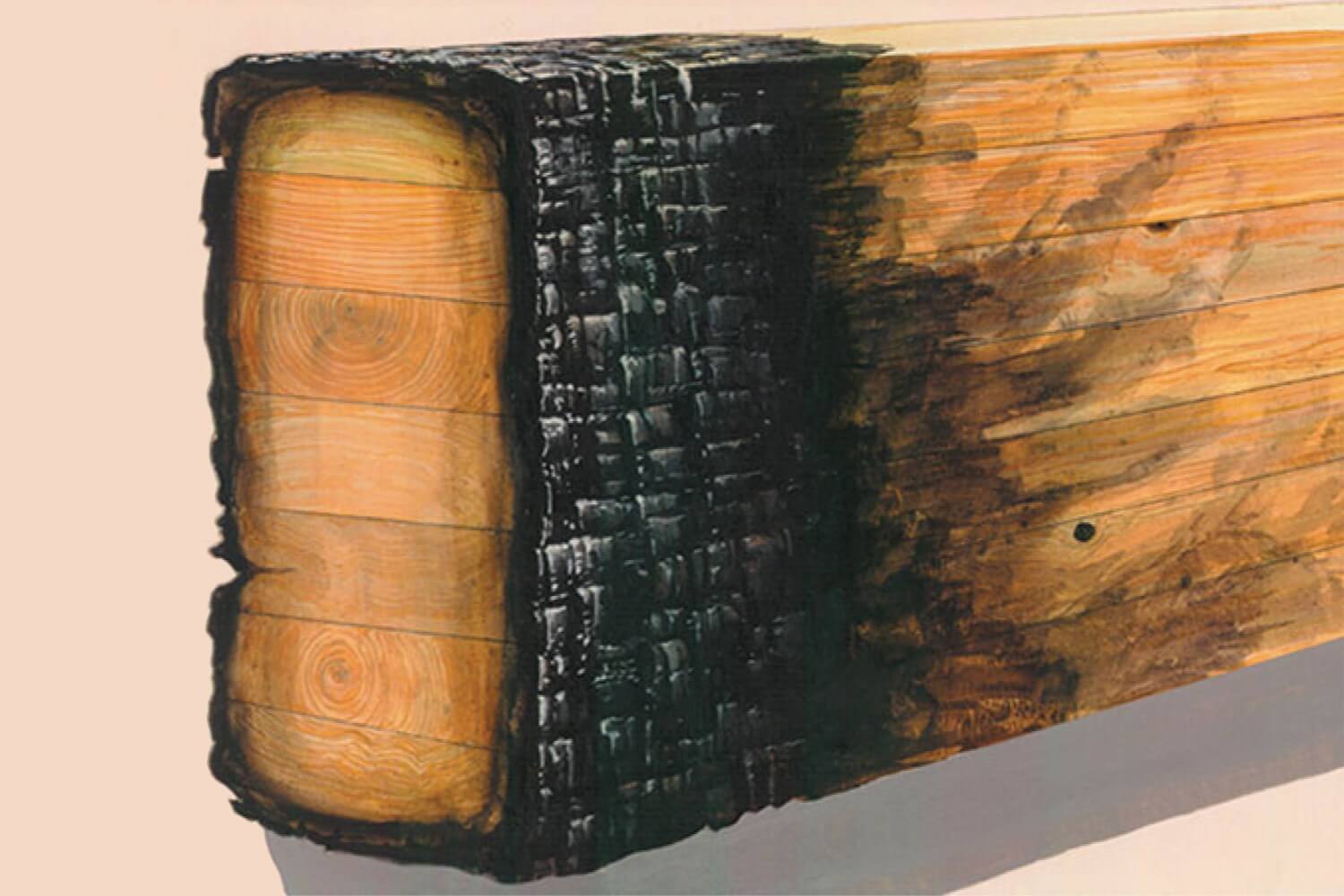
Fire Resistance
Fire testing proved that timber structural members meet or exceed fire rating code requirements in a three-hour test.10 Cross-Laminated Timber chars during fires, which creates an insulating layer to prevent fire spread and heat penetration while maintaining structural stability.
- Austin Hines, Gwen Busby, “Developments in the Built Environment,” Science Direct, November 2020, https://www.sciencedirect.com/science/article/pii/S2666165920300260
- https://www.thinkwood.com/sustainability
- Chad Oliver, “Swap Steel, Concrete and Brick for Wood – Wooden Building are Cheaper and Cleaner,” The Conversation, June 19, 2014, https://theconversation.com/swap-steel-concrete-and-brick-for-wood-wooden-buildings-are-cheaper-and-cleaner-25694
- Brent Lawrence, “An Abstract Thesis on Utilization of Low-value Lumber from Small-diameter Logs Harvested in Pacific Northwest Forest Restoration Programs in Hybrid Cross Laminated Timber (CLT) Core Layers: A Market Response., June, 2, 2017, https://ir.library.oregonstate.edu/downloads/b27740855
- https://www.ohchr.org/Documents/Issues/Environment/SREnvironment/Call/States/AustriaInputs4.pdf
- Sally Augustin, David Fell, “Wood as a Restorative Material in Healthcare Environments,” FPI Innovations, February 2015. Download PDF.
- https://www.nrcan.gc.ca/climate-change-adapting-impacts-and-reducing-emissions/climate-change-impacts-forests/forest-carbon/13085
- Maria McCain, “Bringing the Outdoors in: The Benefits of Biophilia,” NRDC, June 23, 2020, https://www.nrdc.org/experts/maria-mccain/bringing-outdoors-benefits-biophilia
- Andrew A. Hunt, “Exceeding Thermal Performance Goals by Choosing Wood,” Think Wood, https://www.bdcuniversity.com/sites/sgc-university/files/ExceedingThermalPerformanceGoalsByChoosingWood.pdf
- Shiling Pei, Douglas Rammer, Marjan Popovski, Tom Williamson, Philip Line, John W. van de Lindt, “An Overview of CLT Research and Implementation in North America,” Forest Products Laboratory, August 22, 2016, https://www.fpl.fs.fed.us/documnts/pdf2016/fpl_2016_pei001.pdf
- Md Shahnewaz, Thomas Tannert, M. Shahria Alam, Marjan Popovski, “Seisemic Performance of Cross Laminated Timber (CLT) Platform Building by Incremental Dynamic Analysis,” Research Gate, September 2017, https://www.researchgate.net/publication/319979099_Seismic_Performance_of_Cross_Laminated_Timber_CLT_Platform_Building_by_Incremental_Dynamic_Analysis
- Robert H. Falk, James J. Bridwell, Tom Williamson, Todd Black, “Development of a Ready-to-Assemble Tornado Shelter from Cross-Laminated Timber (CLT), Impact and Wind Pressure Testing,” Forest Products Laboratory, April 2019, https://www.fpl.fs.fed.us/documnts/fplgtr/fpl_gtr266.pdf
